Eclipta prostrata, False Daisy
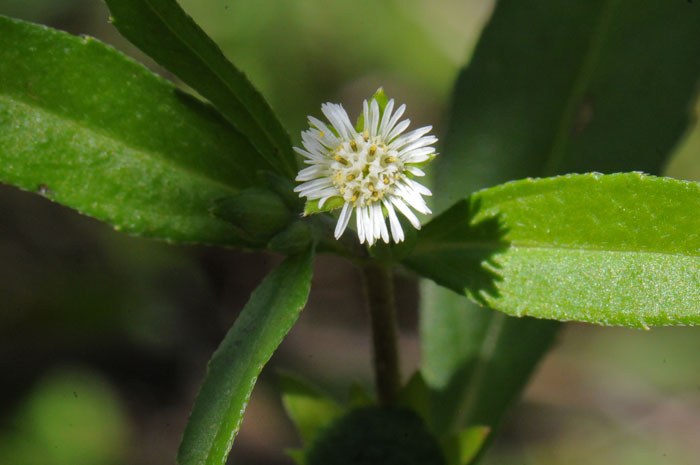
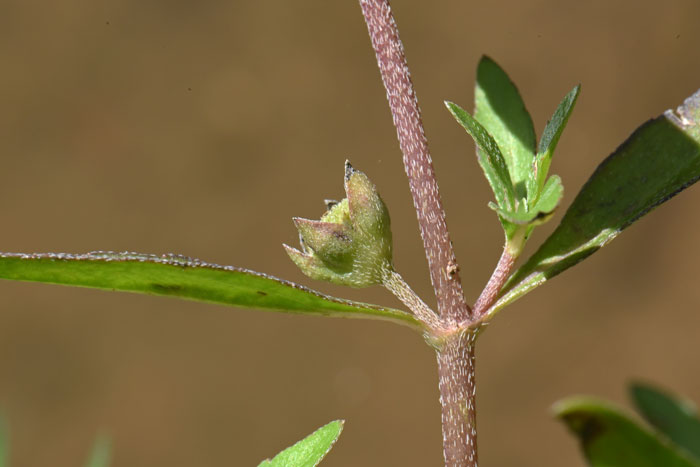
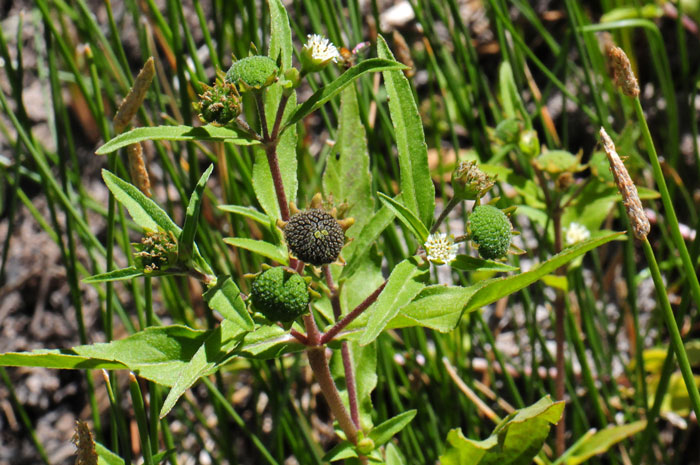
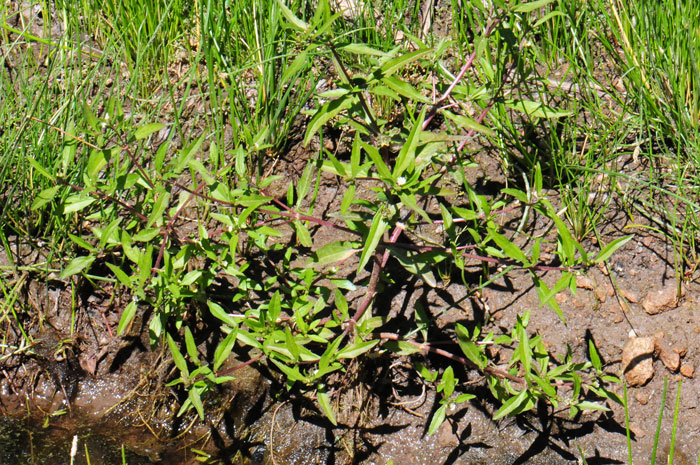
Scientific Name: Eclipta prostrata
Common Name: False Daisy
Also called: Eclipta, Yerba de Tago and Yerba de Tajo; (Spanish: Soguilla)
Family: Asteraceae, Sunflower Family
Synonyms: (Eclipta alba, Eclipta alba var. prostrata, Eclipta erecta, Eclipta punctata, Sabazia leiachaenia, Verbesina alba, Verbesina prostrata)
Status: Native
Duration: Annual, or perennial, taproot.
Size: 4 to 20 inches (10-50 cm) tall.
Growth Form: Forb/herb; plants are low growing, sprawling or ascending; the stems are green and later mature toward reddish or reddish-purple; the plants are more or less covered with stiff straight hairs throughout (strigose); the roots are adventitious and may establish new plants at the nodes.
Leaves: Green, up to 5 inches (12.7 cm)long and 1 inch (2.54 cm) wide; the leaves are generally arranged opposite along the stems; leaves blades generally lanceolate some linear to narrowly elliptic; leaves are either sessile or with short-petioles; leaves edges or margins entire or with small teeth.
Flower Color: White, the flower heads are small, flat-topped; heads solitary or in clusters; with both ray (ray flowers with linear petal) and disk florets; flower heads (1 to 3) from upper leaf axils; fruit is a short, brown cypsela without a pappus.
Flowering Season: June to September, may flower year round in wet warm places.
Elevation: Below 3,500 feet (1,066 m) in elevation.
Habitat Preferences: Moist and damp areas, along streams, ditches and ruderale areas.
Recorded Range: All southern states and the eastern half of the United States, Baja California, northern, central and southern Mexico including the Yucatan Peninsula, Costa Rica and southward to Brazil. Introduced in Hawaii and sub-tropical and tropical areas worldwide. Erratic distribution in Arizona, it may be found in the central part of the state, much of western Arizona and in Navajo and Greenly counties.
North America & US County Distribution Map for Eclipta prostrata.
North America species range map for False Daisy, Eclipta prostrata:
North American range map courtesy of Virginia Tech, Dept. of Forest Resources & Environmental Conservation
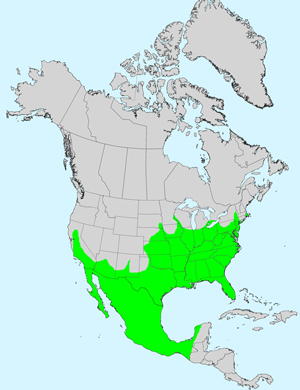
U.S. Weed Information: In North America Eclipta prostrata can be weedy or invasive according to the following authoritative sources:
Plants included here may become weedy or invasive.
Wetland Indicator: In North America Eclipta prostrata has the following wetland designations:
FAC = Facultative, occur in wetlands and non-wetlands
FACW = Facultative Wetland, usually occur in wetlands, but may occur in non-wetlands
Threatened/Endangered Information: In North America Eclipta prostrata, Yerba-de-Tago has be listed by the State of New York as Endangered.
Invasive/Noxious Weed Information: Unknown Genus Information: In North America there is 1 species and 1 accepted taxa overall for Eclipta. Worldwide, The Plant List includes 9 accepted species names for the Eclipta.
The genus Eclipta was published in 1771 by Carl Linnaeus.
In the Southwestern United States, Eclipta prostrata is found in Arizona, California, New Mexico and Texas. No records in Nevada and Utah. Data approximate and may be revised.
Comments: The interesting classification of plants, and perhaps political designations based on boundaries is evident with False Daisy, treated as a weed by several jurisdictions because of its aggressive growth habits while at the same time listed as an endangered species by the state of New York where a few plants enter the southeast part of the states.
False Daisy is one of the first plant species to colonize and perhaps dominate disturbed land.
The genus Eclipta was published in 1771 by Carl Linnaeus.
The species epithet prostrata (prostra'ta:) means prostrate.

